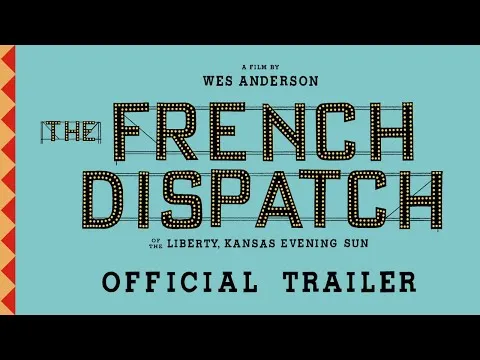Here are a few impressions from The French Dispatch by Wes Anderson.
I believe we can see the film as a love letter from an American to France, based on four stereotypes or iconic images of the country. In the first story, we see the French urban fabric, its rhythms, and its people, with small shops, ancient buildings, and public transportation. This is something very different from both the America of highways and suburban sprawl and the America of skyscrapers. In the second story, we see the French accomplishments in art, both in creation and in commercial promotion. In the third story, we witness the culture of student radicalism and protests, closely tied to the French May of '68. It’s no coincidence that special emphasis is placed on barricades, as their image is iconic, and stereotypical, for the French historical journey from 1789 to May '68. To support this, at least in one instance, Timothée Chalamet's character uses the French word to refer to them instead of the English one. In the fourth story, we, of course, have French cuisine.
I also find some specific details particularly interesting.
In the second story, we might initially get the impression that this is a typical case of the male gaze, which examines, possesses, and aggressively targets the model’s naked body. However, we see that the power dynamics between them are reversed, as Léa Seydoux's character is the one exploiting Benicio del Toro's painter.
In the third story, the depiction of the uprising flirts openly with caricature. In many ways, the students are portrayed as pseudo-revolutionaries, etc. The script chooses to escape this awkwardness through the death of the protagonist, transforming him into the lost and romantic potential of a revolution that never came to pass.
In the fourth story, the captivating rhythm and eccentricity are broken at the end when the journalist—Jeffrey Wright's character—is pressured to reveal what else was said between him and the East Asian chef. We are then confronted with a scene that comments emotionally, but perhaps also with resignation, on the need for conformity for the Asian, the Black, the gay individual. This last detail, in particular, makes us question the entire film we just watched. We are explicitly told that what was said between the two was not included in the journalist's article. After all, the magazine's editor (Bill Murray) seems to be someone who prefers nothing that deviates from a set line. Every part of an article-story must be as if it was written on purpose.Even his death is handled with restraint, calmly, in a Wes Anderson manner by the staff, and in the end, the laborious work on mourning or shock prevails. I notice that the lack of emotion is often attributed to the film and generally to Wes Anderson's work. That is, through all this visual perfection, there’s ultimately no space for emotional identification. This is true to a large extent, but that last "cut" scene from the final story—if we pay attention to it—allows us to question, even slightly, what we saw. To think, what else might have been left out, what else may have been omitted so that everything in the film appears as if it was shot on purpose. In this way, the film finds an emotional grounding, even through absence, deletion, and omission.
